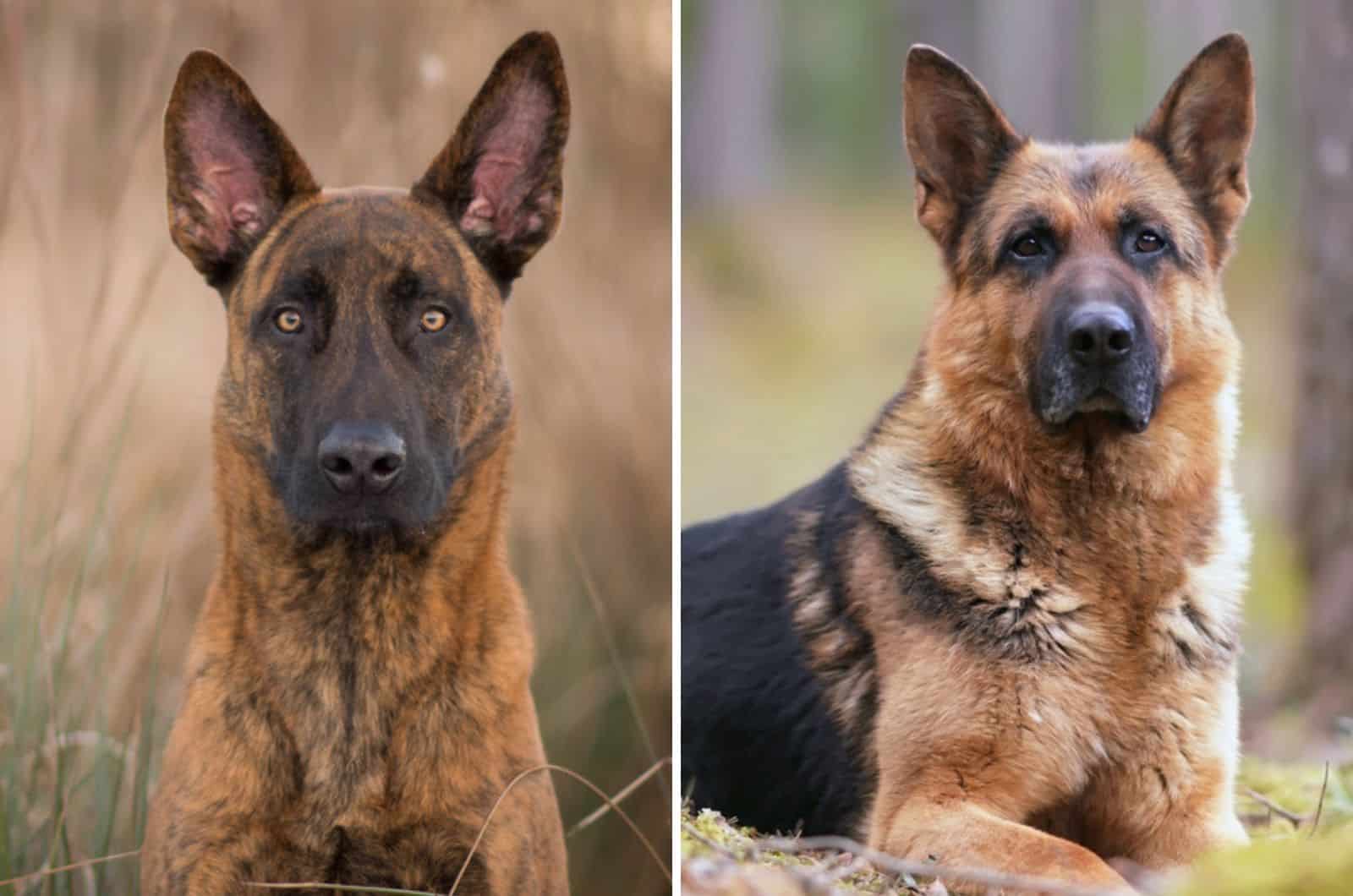The time has come to finally resolve the Dutch Shepherd vs German Shepherd mystery by analyzing each breed in detail.
Not many people would mistake Dutch Shepherds for GSDs mainly because of the coat colors they sport. However, there are more similarities between these two pups than you could imagine.
If you have ever seen a German Shepherd-like pup with a weird shade, but didn’t know which type of dog it was, don’t worry – it has happened to others as well.
That’s why we decided to bring all you need to know about these two wonderful and powerful dog breeds, including all the differences and similarities between them.
History Of Dutch Shepherds And German Shepherds
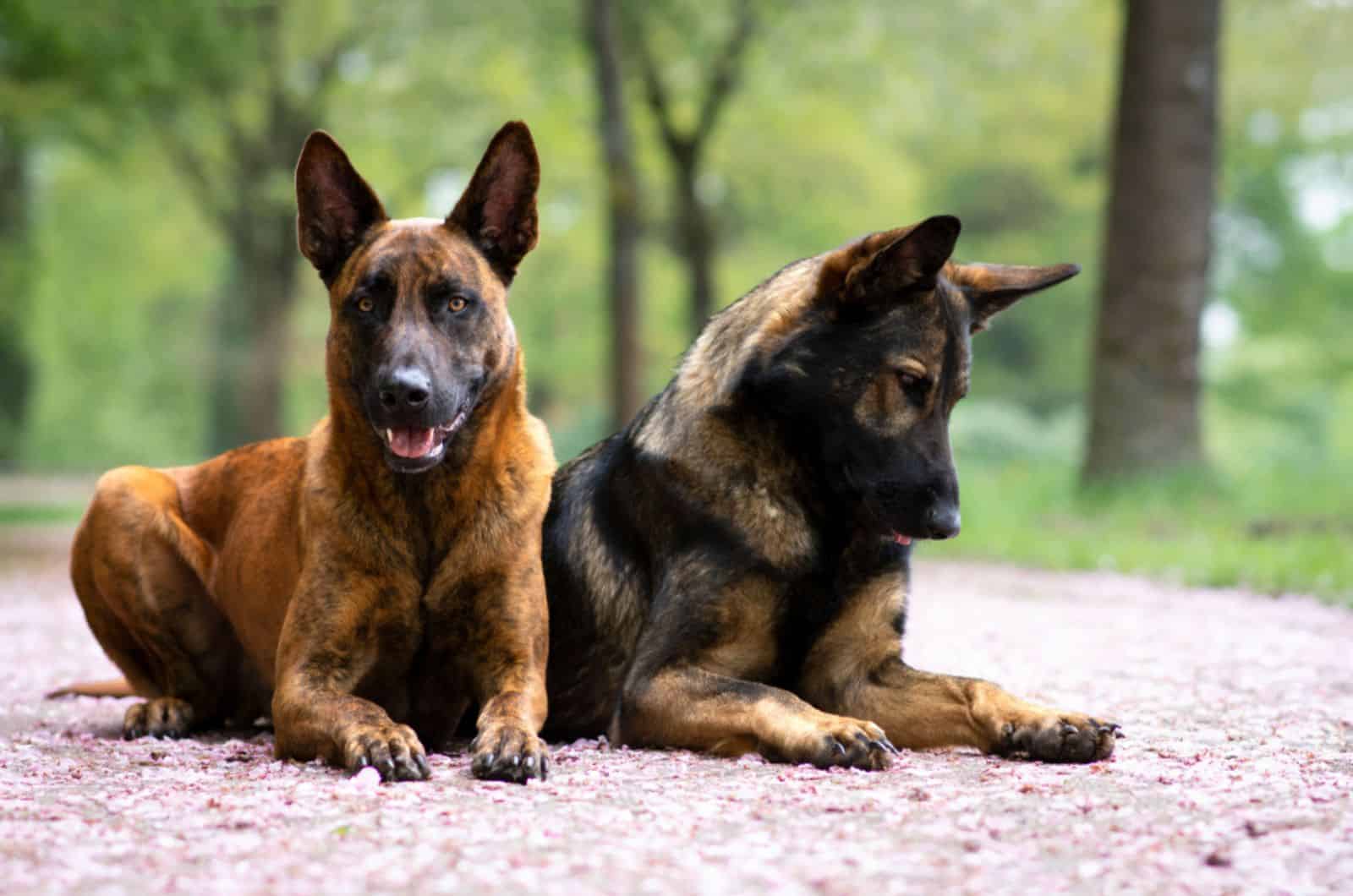
In order to properly understand the breeds that we have today, we need to go back in time and examine their ancestors.
A great number of dog breeds were produced for specific tasks, which essentially shaped their personalities and physical appearance.
There might be some differences between the first representatives of the breed and the canines we know today, but that’s no surprise considering that they’re evolving just like human beings.
Considering that the pups have gone through certain changes within their own breeds, it’s natural that there are plenty of differences between different breeds as well.
Although Dutch Shepherds are similar to German Shepherds in many ways, there are a few key distinctions between them, which include their origins, and the way they were bred throughout history.
Therefore, we will discuss each of the breeds and their history in the next few paragraphs, so you can have a better understanding of their characteristics.
German Shepherd
This type of dog appeared for the first time around the late 1800s as a result of crossbreeding between sheep canines that were living in rural parts of Germany.
It is believed that Max von Stephanitz was the first breeder of GSDs. He had a vision of producing a working dog that would be strong enough to herd sheep for longer periods of time.
READ NEXT: 10 German Shepherd Breeders: The Finest Ones In America
The German Shepherd soon proved its quality to its dog owners, which is why it didn’t take long for this breed to become popular, not only in Germany, but in other parts of the world as well.
This canine is versatile and excels in any task it is given. They’re capable of being good family dogs, but also excellent guard dogs, search and rescue canines, and service dogs, too.
Because of all the great qualities this canine possesses, it’s no surprise that they have been within the top ten places of the Most Popular Dog Breeds list published by the American Kennel Club (AKC).
The popularity of German Shepherds has led to their adoption as trustworthy family pets all over the world, and they have also played a significant role in the development of a wide variety of well-liked hybrid dog breeds.
Dutch Shepherd
You might be surprised to hear that Dutch Shepherds are almost as “old” as their German counterparts since they were also bred around the 19th century.
They first appeared in the Netherlands, which is where they got their name from. Speaking of names, these pups have a few of them, including “Dutchie” and “Hollande Herdershond”.
The exact origins aren’t really clear, but what is known is that they have the same ancestors as German and Belgian Shepherds.
Dutch farmers were trying to breed a canine that would be capable of guarding cattle and farms, as well as pulling carts, preventing chickens from eating the vegetables in the garden, and watching over kids during the night.
It is said with a reason that this doggie is a master of every craft, and one of the canines that will always get the work done.
This breed is still rather uncommon in North America, but it’s quite popular in Europe, especially on farms.
Due to the fact that this farm dog is so adaptable, it may also be seen in the military, search and rescue, service, and other actions.
Although the Dutchie is a purebred canine, it’s still not a full member of the AKC, which means that they’re rather registered as a part of the Foundation Stock Group.
Appearance
The physical appearance of these two canines is quite similar as there isn’t a great discrepancy in terms of height and weight.
This isn’t a surprise considering that they share the same ancestors, at least according to their historical background.
More experienced owners and dog experts, especially those who are working with Shepherd canines, will notice the differences between these two breeds in no time.
Still, if you don’t, there’s no need to worry as you’re certainly not the only one.
In order to understand the differences between these two pooches, we will first discuss the appearance of each breed separately.
Dutch Shepherd
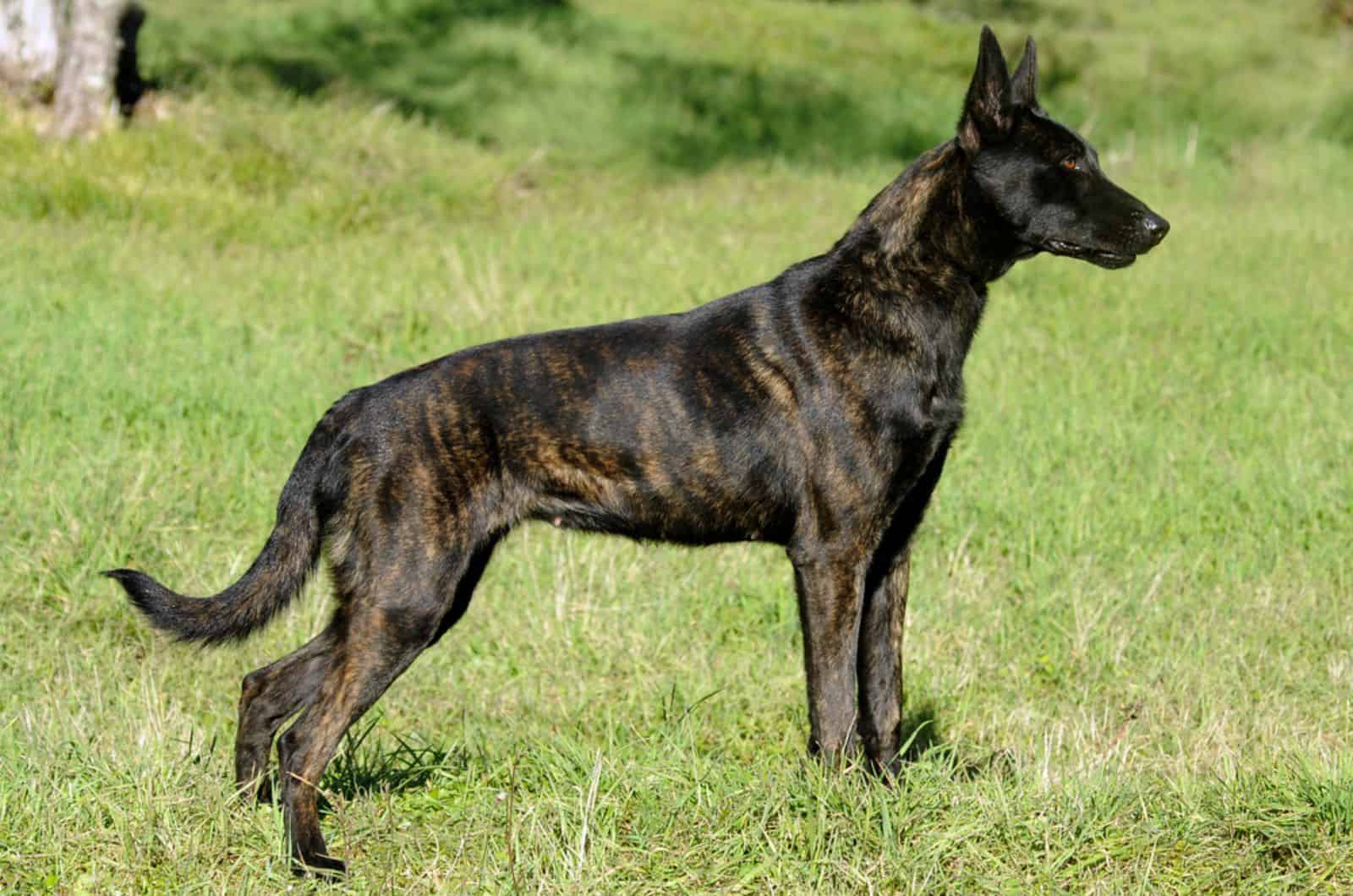
This is a medium-sized type of doggie that has a long muzzle, a flat-like head, upright ears, and beautiful, dark eyes.
These traits are what make these pups easily recognizable as Shepherd canines, along with their rough coat and curled tail.
Dutchies usually grow up to 25 inches, and weigh up to 61 lbs, which is why they’re more often described as medium-to-large dogs.
These pups have a strong stature and a muscled body, but they’re not too heavy, which enables them to be agile and strong enough to endure hours of sheepherding without any problems.
Coat Type
When it comes to their coat, Dutch Shepherds can be recognized by their brindle-shaded fur, which can appear in three types: long, short, and wire.
Dutchies with long hair usually have straight-textured fur, which is quite harsh. Their fur is completely flat, which makes them more prone to shedding, but easier to groom.
When it comes to pups with short hair, they usually have dense fur, with a texture that might not be as wiry as straight hair, but still not nearly as soft as the coat of big fluffy pups like Samoyeds, Bernese Mountain Dogs, Great Pyrenees, etc.
Last, but not least, is the wiry texture, which is quite common among Dutchies. This type of fur is characterized by a wavy-like texture that is neither too harsh nor too soft.
The main coat colors of Dutchies are silver brindle and gold brindle, which is essentially the main difference between them and German Shepherds.
However, these aren’t the only shades of Dutch Shepherds. They can also appear in colors such as salt and pepper, blue, gray, and yellow.
These pups are low-maintenance when it comes to grooming as they’re rather moderate shedders. However, even though they shed less than GSDs, they’re still not recommended for people who are allergic to dog hair.
German Shepherd
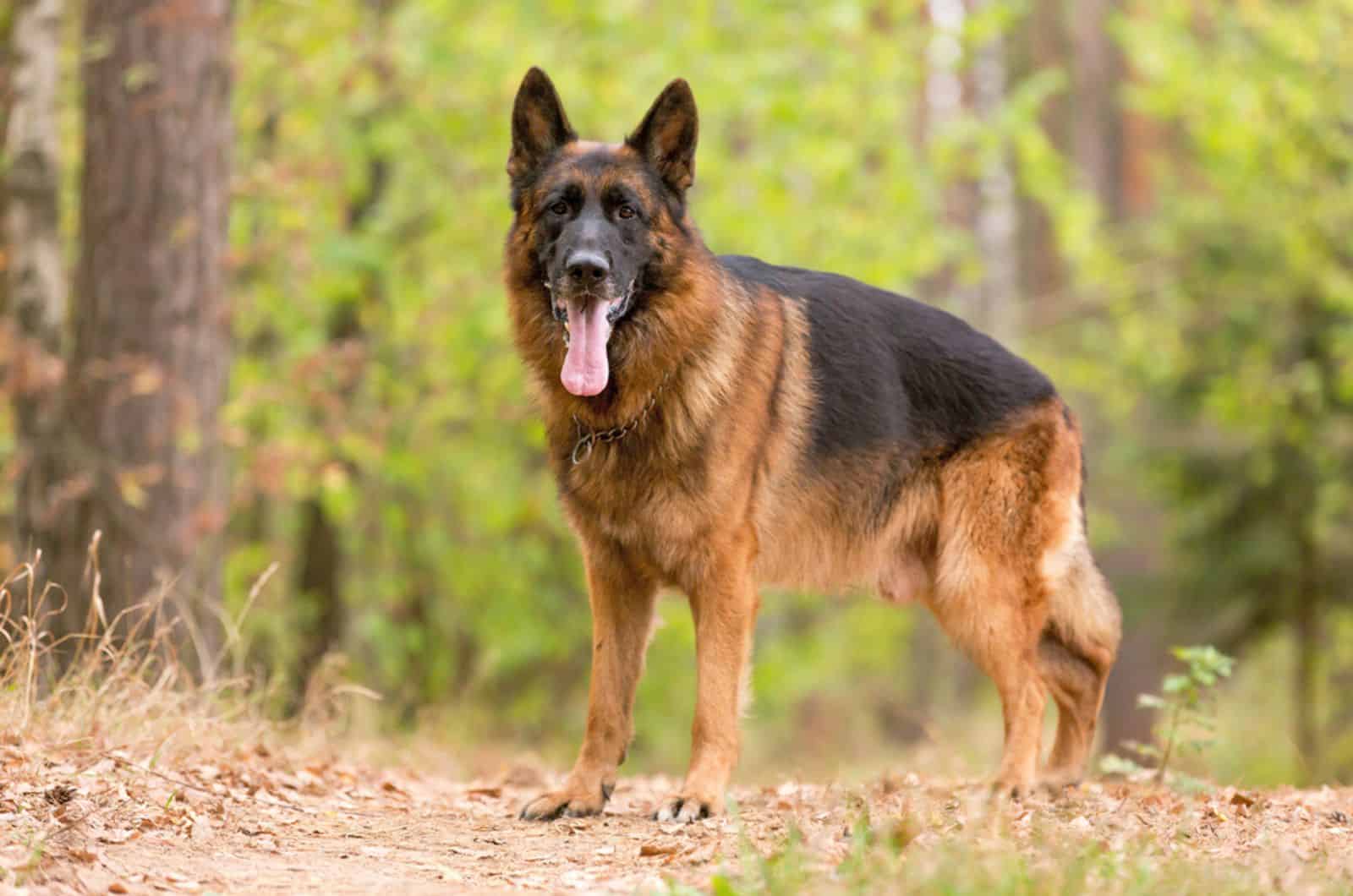
Many people will agree that German Shepherds are a beautiful dog breed that sport a powerful look, although they’re not as large as Great Danes or Bernese Mountain Dogs.
GSDs share similarities with wolves when it comes to their physical appearance mostly because of their thick and wiry coat, and erect ears.
RELATED: 31 Wolf Like Dog Breeds: Finest Collection Of Fierce Dogs
They belong to the category of muscular canine breeds because of their strong stature and stocky body frame.
These doggies can grow up to 25 inches, and weigh up to 90 pounds (everything up to 100 pounds is acceptable).
German Shepherd puppies have a longer muzzle, which enables them to successfully complete tasks that require a stronger sense of smell.
That is exactly why this is one of the most popular breeds in the military, police, and other services that involve search and rescue missions.
Coat Types
The majority of people, even those who aren’t so knowledgeable about canines, will recognize German Shepherds immediately because of their signature look that includes a black and tan shade combination.
However, this isn’t the only color of German Shepherds. They can also appear in white, black, sable, gray, red and black, isabella, silver, black and silver, liver, black and cream, or blue.
READ NEXT: Albino German Shepherd: The Myths And The Facts Explained
Bicolor pups usually have patches of shades on a solid background that look like blankets or saddles depending on the type of their fur.
When it comes to the quality of the coat, it’s important to mention that these pups have a double coat of thick consistency.
This is one of the main reasons why GSDs shed so much, but although they’re not hypoallergenic, they’re still one of the best family breeds and guard dogs.
It’s also good to know that their fur is water-resistant, so they can fulfill their tasks without problems, even if it’s raining outside.
Dutch Shepherd Vs German Shepherd
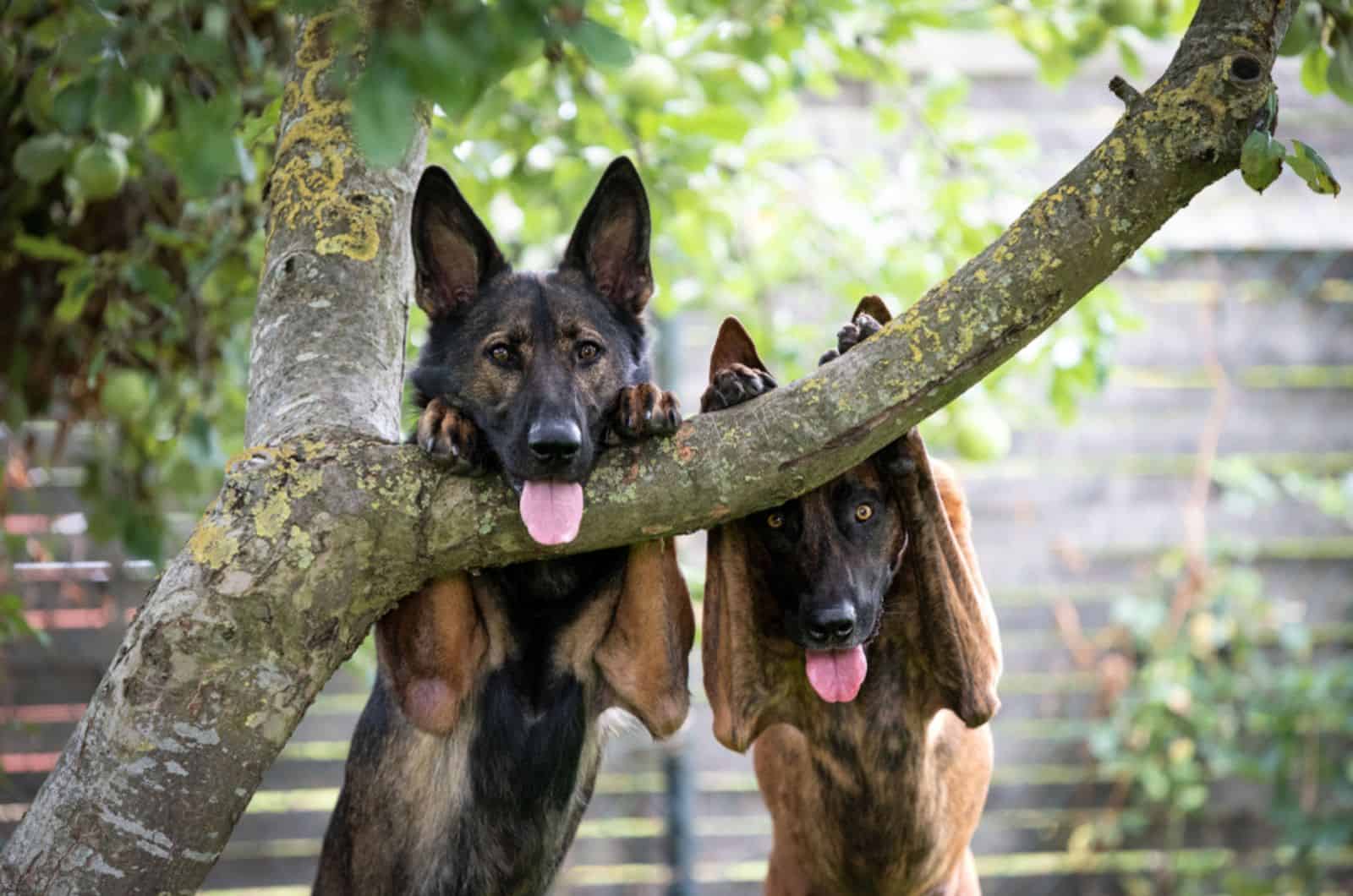
The German Shepherd indeed shares a lot of similarities with its cousin, the Dutchie, but there are still enough differences that will help you differentiate these two breeds.
The fur is the most obvious characteristic that differentiates Dutch shepherds and GSDs from one another.
For example, only Dutchies can have brindle fur as this shade is non-existent among German Shepherds.
Another less-obvious difference between these two pups is their size. Dutch Shepherds are usually a few inches smaller than GSDs, but that won’t be noticeable unless you’re a German Shepherd aficionado.
The same goes for their weight, so don’t be surprised if a Dutchie weighs at least ten pounds less than a GSD.
Dutch Shepherds have a somewhat stockier look than their German counterparts, with a skull that often appears to have a more square-like shape. Despite this, Dutchies are no more muscular than the famous German watchdogs.
Coat Types
As we mentioned above, the main difference between these two canine breeds is in the shade of their fur.
Although they might appear in a few similar hues, generally speaking, Dutchies and GSDs don’t share the same colorations of their coat.
German Shepherds are mostly known for their black and tan fur, which isn’t characteristic of Dutch Shepherds. Therefore, if you come across a black and tan canine with other physical traits of both breeds, you can be sure that this is a German Shepherd.
On the other hand, Dutch Shepherds often appear in brindle patterns, which is a part of their signature look, especially since GSDs never sport such markings.
According to the GSD’s AKC breed standard, these canines have harsh, fuzzy-like fur, while Dutch Shepherds usually come with more of a wiry-like, double coat, with a wooly undercoat.
They can both appear with either short or long fur depending on the type of Shepherd dog.
Such coat types enable them to stay dry and warm even during harsh weather conditions, which is why both of these canines are excellent choices for sheepherding or any outdoor work.
Shedding
Considering that both of these Shepherds have a double coat, you can already imagine the amount of shedding throughout the year.
However, it’s interesting to notice that Dutch Shepherds shed less than their German counterparts.
That’s exactly why it’s easier to groom a Dutchie, so if you’re looking for a Shepherd breed that doesn’t require much grooming, then the Dutch Shepherd is the pet for you.
Still, even though German Shepherds aren’t exactly low-maintenance canines, they’re definitely worth all the time and work that you need to dedicate to them.
Personality
In the next few paragraphs, you will be able to compare these two dog breeds in terms of their temperament.
Although they share a lot of personality traits, there still are some differences that make the Dutch Shepherd vs German Shepherd battle even more interesting.
One of those traits might actually be the deciding factor if you’re still in a dilemma about which Shepherd to get.
Dutch Shepherd
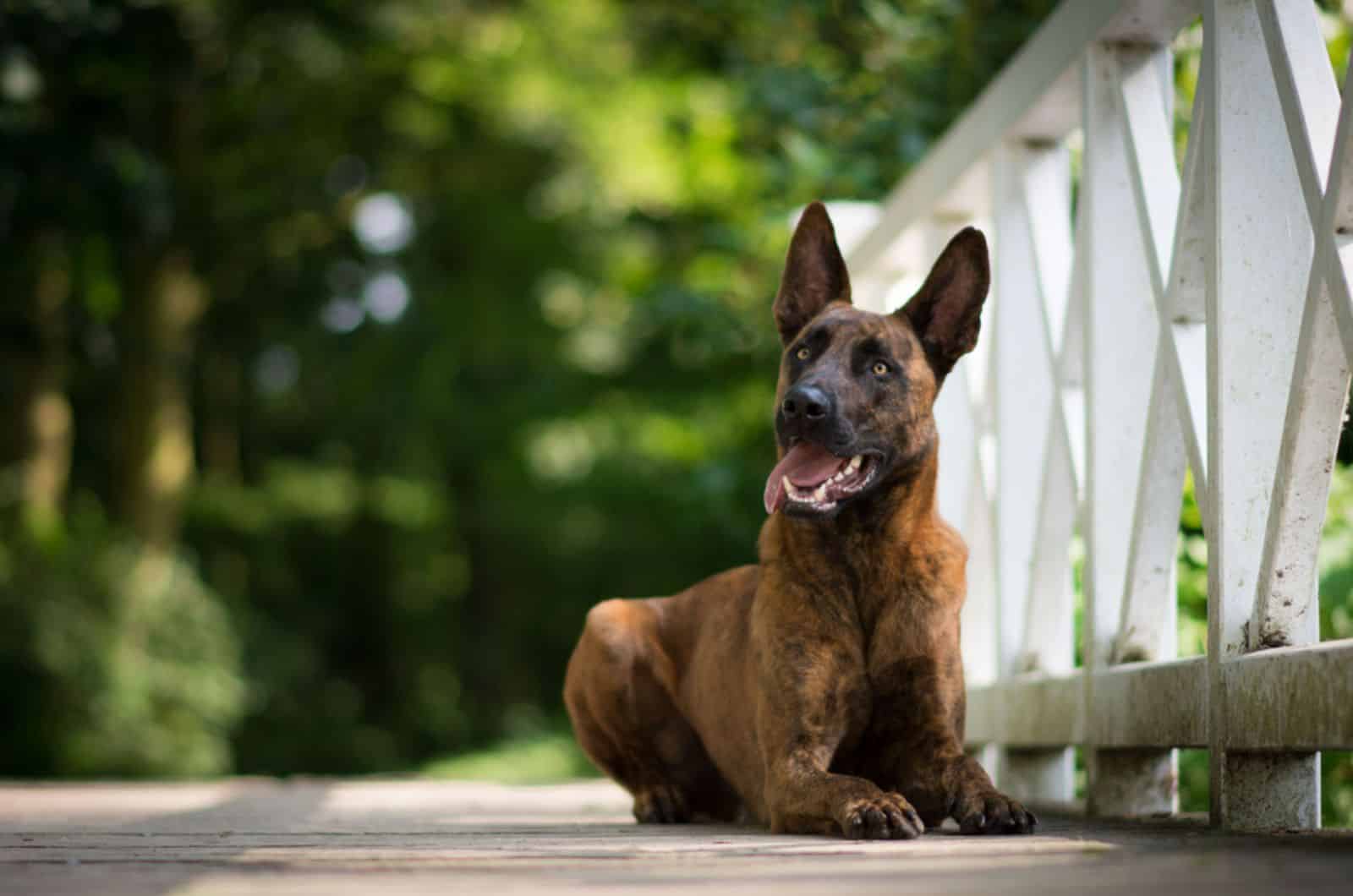
One thing is for sure – Dutch Shepherds love cuddles, and are highly affectionate towards their owner and their family.
One of the best things about these puppies is that they’re cuddly, but not overly sensitive, which is why they can interact with children and bigger families.
They love playing outside, but indoor playtime is acceptable for them as well.
However, keep in mind that they’ll need a lot of mental stimulation throughout training in order to become affectionate and obedient pups.
Dutchies love to run around, but they also need to feel mentally challenged in order to develop in a healthy way.
The Dutch Shepherd is a very intelligent breed of canine that is able to pick up new skills quickly, and compete successfully in a variety of sports competitions for dogs.
These pups are very intelligent, but they’re also loyal to their owner, which is why they’re considered to be easily trainable.
You can rely on them in every situation, and be sure that they’ll always be by your side.
Still, they might show slight signs of disobedience and an overly-playful nature, but only if they’re not trained from early puppyhood.
Dutchies will do everything to protect their owner and family, which is why they’re among the best watchdogs.
RELATED: 19 Big Guard Dogs: Choose Your Favorite Protector
You can be sure that Dutch Shepherds will react to any threat they sense, but fortunately, that doesn’t refer to any stranger that comes near their owner or property.
Training
Every potential owner of Dutch Shepherds should be aware of the fact that this breed is highly energetic, which is why they need to be challenged mentally just as much as physically.
There are plenty of ways to motivate your Dutchie pup during training, which include mental challenges such as problem-solving activities, mental stimulation, dog toy puzzles, etc.
Of course, these activities should be combined with physical exercise, especially since Dutch Shepherds have high energy levels.
Punishment of any kind isn’t recommended for any canine, especially Shepherd Dogs like Dutchies, as it will only produce a counter effect.
If you use punishment as a training method, your dog might develop anxiety and trauma from all the stress, which could also affect your relationship with the dog.
Still, keep in mind that Dutch Shepherds might not be as easy to train as German Shepherds as they’re more strong-willed.
However, this doesn’t mean they won’t obey commands from their owner and dog trainer. If they’re properly trained from the first days of their life, and bred by a reputable breeder, you will get a high-quality pup.
Dutch Shepherds were originally bred to work on farms, but they have since found a second career working as police dogs or military helpers.
Because of their intelligence, trainability, and naturally high drive, Dutch Shepherds that have completed certified training through the Royal Dutch Police Dog Association are in high demand by law enforcement agencies all over the world.
German Shepherd
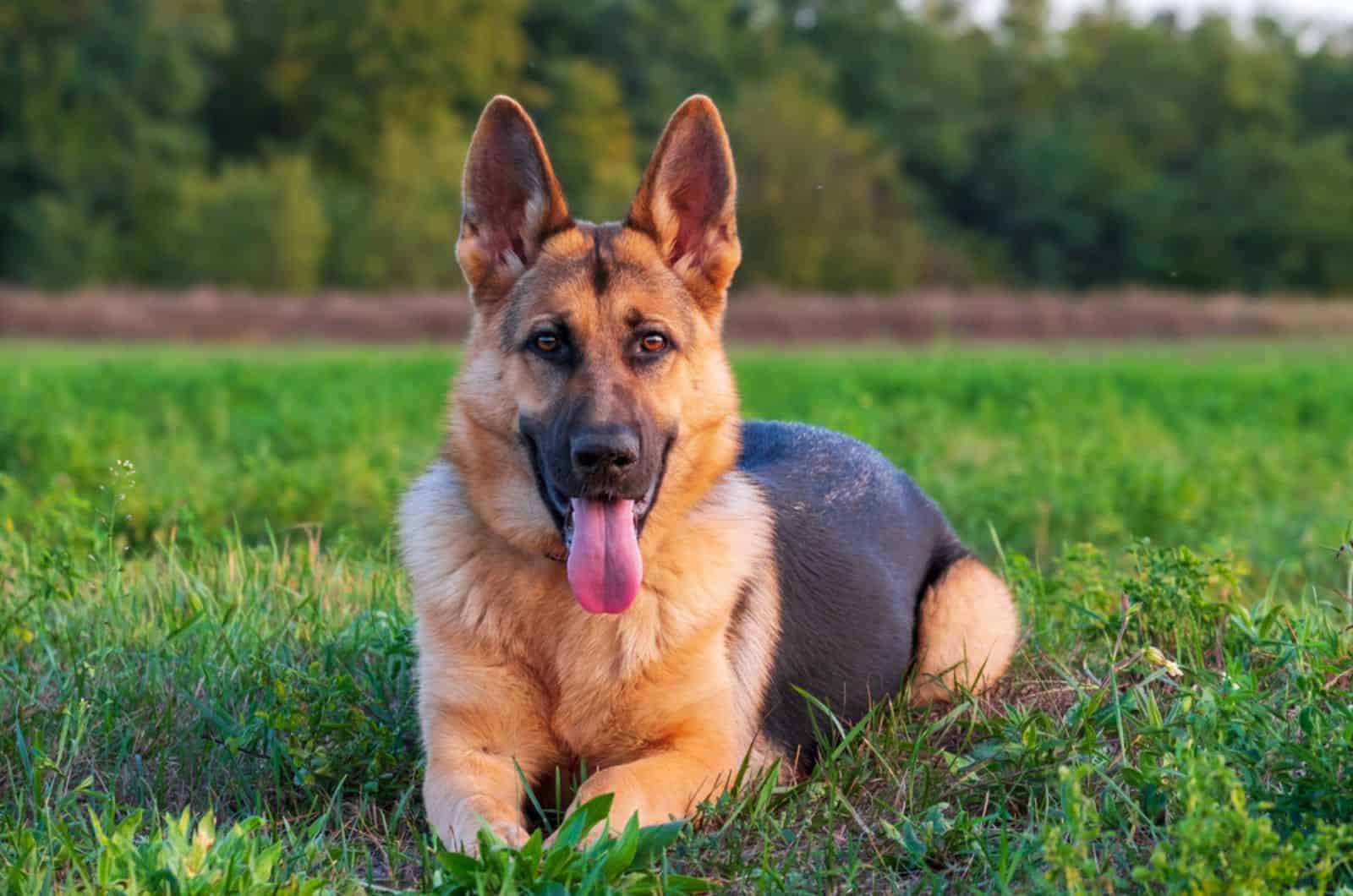
It’s not a surprise that German Shepherds are considered among the best guard and guide dogs as they’re fiercely devoted to their owner, and very protective not only of humans, but properties as well.
They have a strong sense of smell, which is why these pups are usually more sensitive than other canines. Therefore, if you notice that your pet isn’t behaving as usual, it might be because of a certain smell that it might not like.
Although GSDs are fearless and alert, this in no way means they are aggressive canines. German Shepherds will rarely show any sign of aggression, and even if they do, there’s probably a good reason behind it.
A healthy, well-balanced GSD that has been properly taught and socialized from an early age has a natural urge to protect its family, and it will bark at and chase away any potential intruder.
READ NEXT: A German Shepherd Barking: The Perfect Guide to Train Your GSD
When these pups are neglected, abused, or trained to be violent (not to be confused with properly-trained protection dogs), they lack socialization, and have the potential to become a threat to society.
They won’t be thrilled with meeting new people, but they won’t be hostile towards them either. Once they get to know people, they become very friendly and affectionate towards them and other animals.
German Shepherds have deep attachments to their owner, build bonds that last a lifetime, and have high requirements for the amount of care and affection they get.
They are not the type of dog that would do well living by themselves in a back yard, but would do well as a member of a family, living in a house with their humans and thriving there.
GSDs are excellent with children as they have a lot of patience, but since they’re quite sensitive to loud noises, it might not be a good idea to leave them with small kids without supervision.
Training
GSDs require intensive training sessions from an early age as they’re a very intelligent dog breed that needs to be guided in order to excel in every task they’re given.
If the dog owner doesn’t show dominance in the first days of getting this canine, the pup will easily outsmart them and try to take over control.
If they’re not mentally challenged throughout training, German Shepherd dogs might even show signs of destructive behavior and disobedience. They have respect for strong leaders, which is why they’re excellent police and military dogs, as well as search and rescue, drug detection, and assistance canines.
The German Shepherd is a breed of working / herding dog that has been developed over many generations to be a hard worker.
GSDs flourish in an atmosphere that provides them with a great deal of instruction and a variety of challenging opportunities, which is why they need mental stimulation and positive reinforcement during training.
Dutch Shepherd Vs German Shepherd: The Exercising Battle
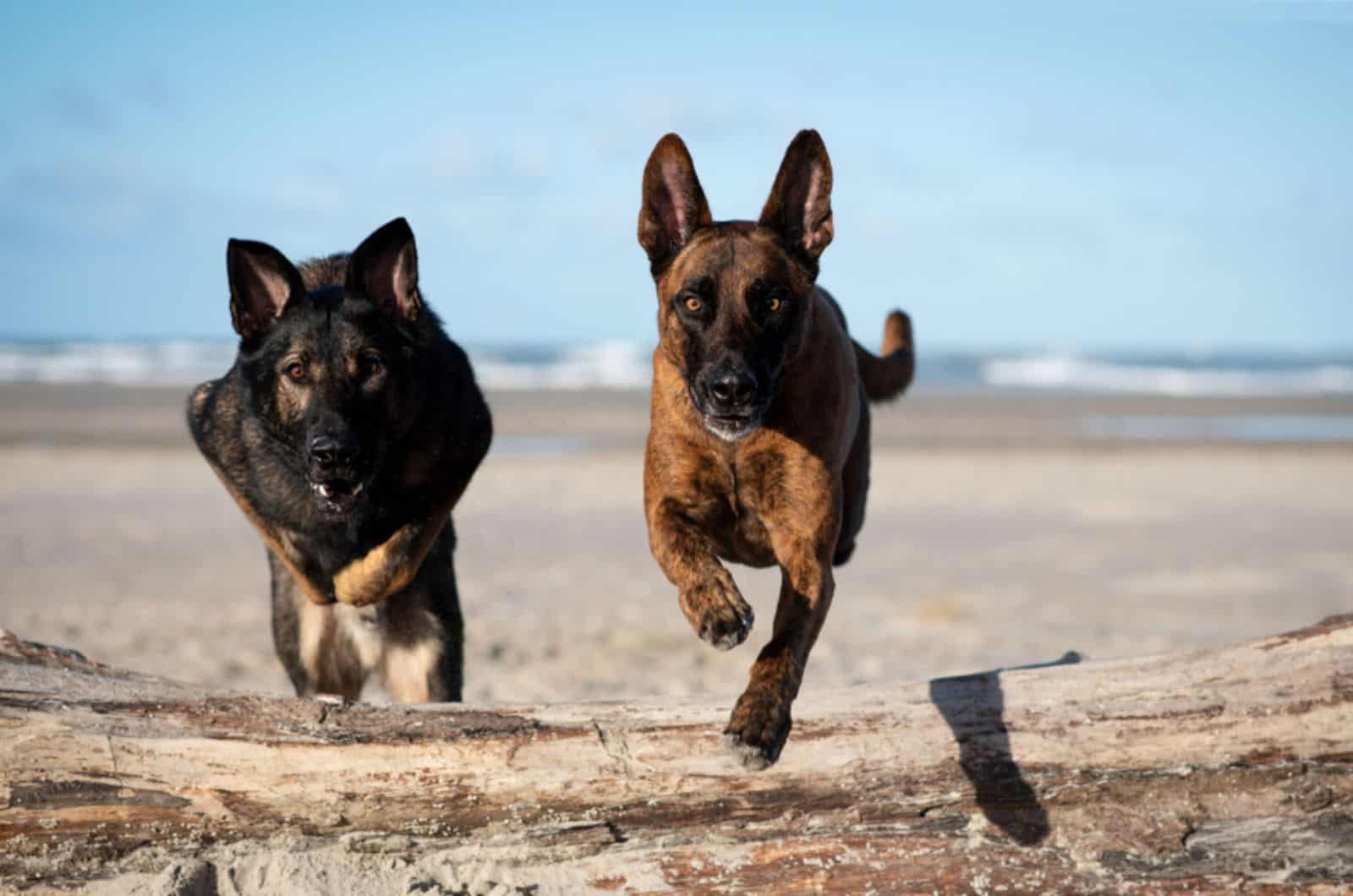
Both German and Dutch Shepherds are fiercely energetic canines and hard workers, which is why they require a significant amount of exercise.
Training isn’t only a challenge for dogs… it’s also a challenge for their owner, especially if you own a Dutchie, which is more stubborn than a GSD.
If you’re not ready to dedicate at least one or two hours (not counting walking time) to training your doggie, you should rather look for a pet with low or medium energy levels.
RELATED: 17 Low Energy, Medium-Sized Dogs + Some Lazy Dog Breeds
Both German and Dutch Shepherds might easily become disobedient and show signs of destructive behavior if they don’t fulfill their daily requirements for physical activities.
Having said that, there is one breed that stands out from the others in terms of its high level of activity, and that is the Dutch Shepherd.
The Dutch Shepherd is not typically considered the best family dog because of its focus on work.
Although German Shepherds haven’t been originally bred to be family canines either, just like Poodles and other dog breeds, they are currently raised for this purpose.
This indicates that they are acclimated to a more tranquil existence at home, where they usually lay around or cuddle with their owner.
As a result of this, many people who own Dutch Shepherds think that their pets have a more intense level of energy.
There’s definitely more work to be done with Dutchies than with GSDs. This is important to mention as it might be the deciding factor for some people who are still questioning which one is better – the German or Dutch Shepherd.
Health Issues
Both canine breeds are considered quite healthy, but if we analyze their health through life expectancy, it can be said that Dutch Shepherds are healthier than their German counterparts as their lifespan is usually up to 14 years.
GSDs have a bit shorter lifespan as they generally live up to 12 years (13 at most).
Of course, these numbers are statistical results, but this might be different in practice as a great number of Dutchies live up to an outstanding 17 or 18 years.
Still, this doesn’t mean that Dutch Shepherds aren’t prone to certain health issues.
Dutch Shepherd
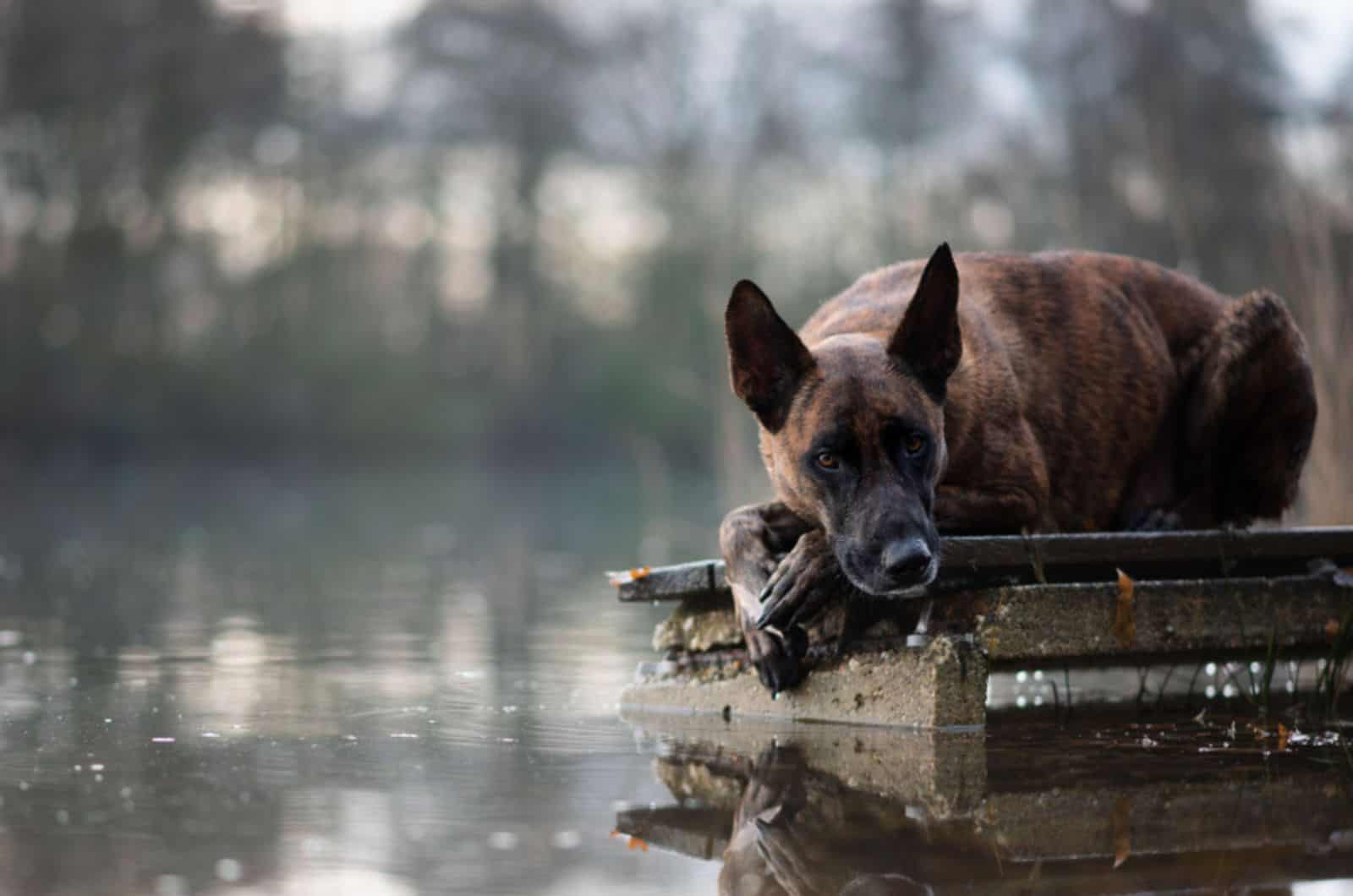
• Atopic skin issues – This is a frequent issue among Dutchies, and one of the most common reasons why owners of these canines bring their pets to the vet.
Unfortunately, Dutch Shepherds often have allergic reactions that show on their skin as they spend a large amount of time outside.
Dogs that are affected by this health problem typically endure discomfort throughout their whole life, with painful and itchy flare-ups.
A great number of Dutchies have symptoms such as itchy skin, rashes, and watery eyes. There are several different medications available. However, each medicine has varying degrees of effectiveness, which is why you should consult with a health professional before you start using any.
• Goniodysplasia – This is a very uncommon health issue that has been noticed mainly in wire-haired types of canines, such as Dutch Shepherds.
Dog experts and health professionals are still not quite sure whether goniodysplasia is a genetic condition or a disease caused by certain factors.
This disease isn’t life-threatening, but it can cause blindness if it’s not treated in time. A reputable veterinarian should be able to recognize the symptoms in time, and start the treatment immediately.
• Elbow Dysplasia – This health issue is one of the most common conditions that appear in almost every dog breed, especially bigger canines like Cane Corsos, Bernese Mountain Dogs, Great Pyrenees, Great Danes, etc.
The main symptoms of this condition are limping, lethargy, swelling of elbows, and others.
• Inflammatory Bowel Disease – Although it is classified as a disease, it can be said that this condition is rather a syndrome that is characterized by chronic inflammation of the canine’s intestinal tract.
This condition makes it difficult for the gastrointestinal system to digest food properly, which is why dogs with IBD lack nutrients.
The most common symptoms of IBD are sudden weight loss, vomiting, stomach pain, diarrhea, and even blood in the stool.
It is not always easy to diagnose IBD since dogs might not show symptoms as early as humans, which is why it takes a lot more time until the treatment begins.
This is why the majority of canines with IBD usually receive lifetime treatment, along with modifications in their diet.
• Masticatory Myositis – This condition appears often in Dutch Shepherds. It is characterized as an improper immune response to the canine’s muscle tissues.
Essentially, the immune system doesn’t recognize the masticatory muscles as being a part of the canine’s body, which is why it attacks them.
Suppose you notice that your pet’s mouth is swollen, and that it experiences great pain and discomfort during chewing or simply opening its mouth. In that case, there’s a great chance your canine is suffering from Masticatory Muscle Myositis (MMM).
Infections caused by germs, viruses, immunizations, stress, contact with allergens, responses to medicine, and contact with environmental toxins are all thought to be potential causes of this disease.
German Shepherd
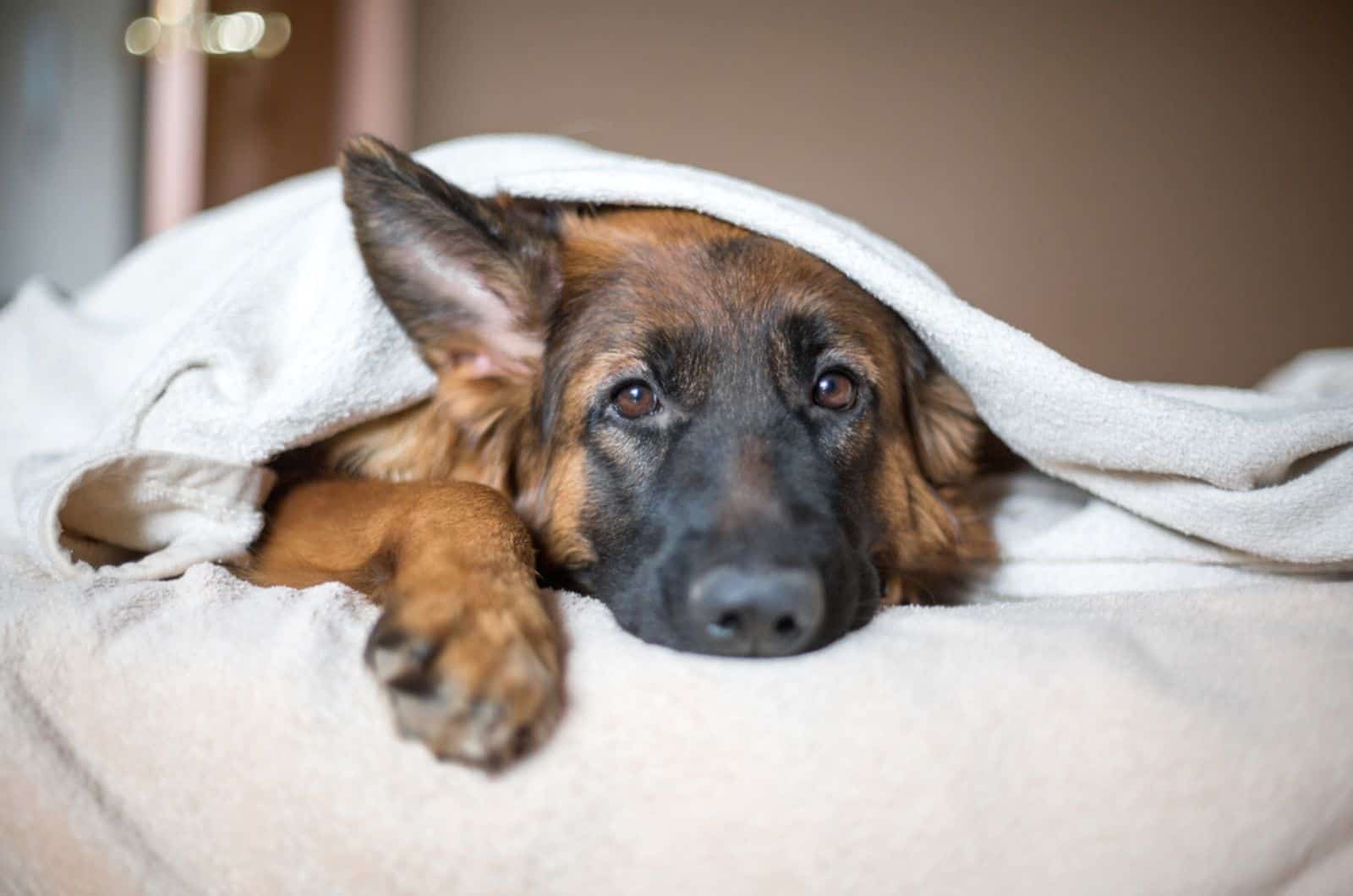
• Hip Dysplasia – Hip dysplasia is a disorder that manifests itself in young puppies when they are still in the process of growing. This condition causes hip pain and improper posture for the canine.
Unfortunately, there is no magical cure for this health issue. Still, it can be put under control by weight control, medications, and surgery (in case your pup has severe hip dysplasia).
• Bloat (or Gastric Dilatation-Volvulus (GDV)) – The life-threatening condition known as gastric dilatation is most frequently observed in large pups with a deep chest; nevertheless, any type of canine is at risk of developing this health problem.
This health issue usually appears as bloating in the early stages, but it can become a serious condition if it’s not treated in time.
Bloating is usually not considered a serious medical condition, which is why a great number of dogs get “accidentally neglected”.
• Degenerative Myelopathy – This disease is often compared to amyotrophic lateral sclerosis (ALS), which appears in humans because of similar symptoms.
It is a disease that usually shows in the later years of a dog’s life, and it is manifested by the loss of coordination, general weakness, lethargy, etc.
This disease cannot be cured, but you should still take your pet to the vet for checkups as they can help you take care of your dog, and offer them medications that will relieve them of pain.
• Epilepsy – The neurological condition known as epilepsy is defined either by recurring seizures that do not have a known cause, or an abnormal brain lesion (brain injury or disease).
A seizure is characterized by a sudden increase in the electrical activity of the brain, which manifests itself as unusual movements, shaking, tremors, convulsions, and/or spasms in the affected individual.
• Hemophilia – This is a medical condition that causes dogs to bleed without any specific reason (injury or known health issue).
Essentially, the bleeding is caused by the deficiency of blood clotting, which causes external and internal bleeding.
Internal bleeding in bodily cavities like the chest or abdomen can cause edema, which can eventually lead to death if not treated quickly.
Puppies frequently suffer from this condition, which causes them to bleed for an abnormally long time, and it could cause them to pass away within a few weeks after birth.
The severity of the illness is directly proportional to the level of coagulation dysfunction present. Hemophilia is more prevalent among purebred dogs, and male canines are more likely to be affected by the condition than their female counterparts.
Grooming Needs
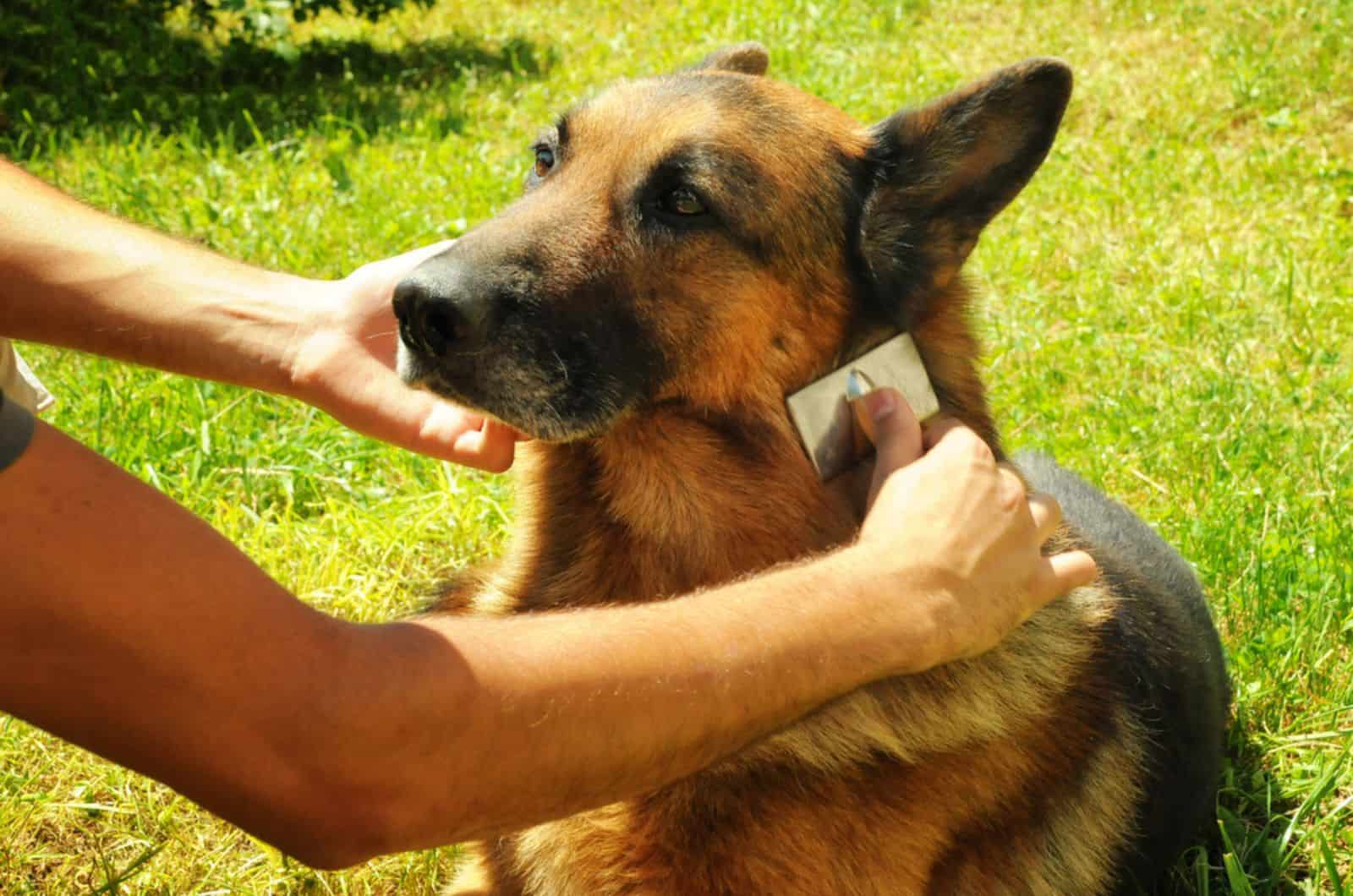
Almost every dog breed has its own grooming requirements, so there is no universal rule for all canines regarding the maintenance of their fur.
The type of grooming session will be determined by the coat of the canine. For example, German Shepherds have two types of coat: short and long, which means they need to be treated differently.
READ NEXT: Long-Haired German Shepherd Vs Short Haired: Which Is Better?
GSDs with longer fur shed more, and get their hair easily tangled, so it’s natural that they require daily brushing sessions.
Shorthaired German Shepherds are easier to maintain, but even they require at least two to three brushing sessions throughout the week.
When it comes to shorthaired Dutchies, they shed less, which is why they won’t need more than two brushings per week.
However, Dutch Shepherds with a longer coat will still have to be regularly groomed and brushed at least once every two days.
The best way to save yourself from piles of dog hair around the house during shedding seasons is to get a good deshedding tool.
This grooming tool is useful for all coat types, so I’d strongly recommend one even if you own a shorthaired Dutchie.
Dutch Shepherds with wiry fur will indeed shed less than GSDs, but their hair still needs to be clipped regularly in order to keep them clean and healthy.
Wrapping Up On The Dutch Shepherd Vs German Shepherd
The battle of Dutch Shepherd vs German Shepherd has come to an end, and I suppose that by now, you have a clear picture of all the differences between these two dog breeds.
Although they share quite a lot of similarities, just like other dogs that look like German Shepherds (the Belgian Malinois, the White Swiss Shepherd Dog, the Caucasian Shepherd, etc), each of these breeds has certain characteristics that can help you tell them apart.
As you can see, the country of origin isn’t the only difference between these two canines. Now, it’s up to you to make the final decision about which one is the better choice for your household.
